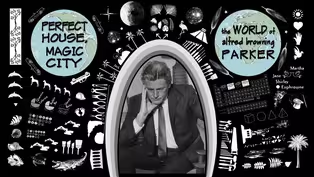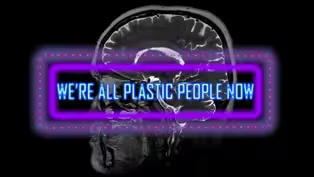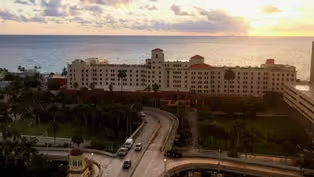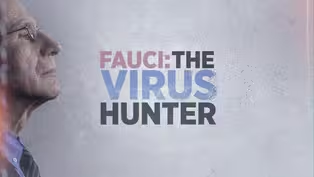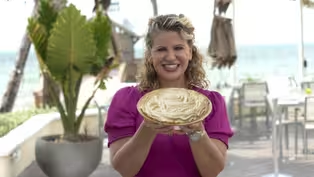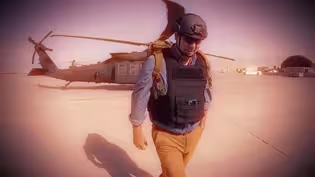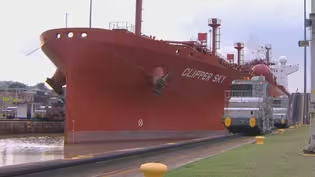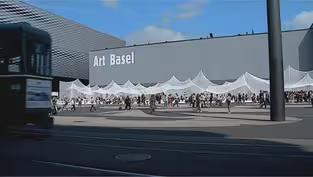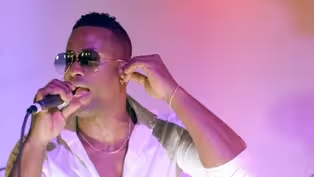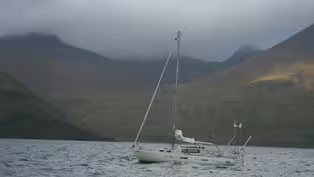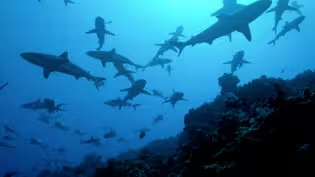South Florida PBS Presents
The Story of Florida State Parks: The Modern Era (1970 - Present)
Special | 25m 27sVideo has Closed Captions
Continue the journey through the landscapes, stories, and people that shaped Florida's park system
Discover how the visionaries of the 1970s and 1980s fought to preserve Florida’s most treasured landscapes, like Payne’s Prairie, Falling Waters, and the Fakahatchee Strand — the "Amazon of Florida." Meet the rangers, biologists, and everyday heroes who brought bison back to the prairies, restored wildfires as vital ecological tools, and protected sacred Indigenous lands.
Problems playing video? | Closed Captioning Feedback
Problems playing video? | Closed Captioning Feedback
South Florida PBS Presents is a local public television program presented by WPBT
Funding provided by Wachovia Wells Fargo Foundation and Florida Power & Light.
South Florida PBS Presents
The Story of Florida State Parks: The Modern Era (1970 - Present)
Special | 25m 27sVideo has Closed Captions
Discover how the visionaries of the 1970s and 1980s fought to preserve Florida’s most treasured landscapes, like Payne’s Prairie, Falling Waters, and the Fakahatchee Strand — the "Amazon of Florida." Meet the rangers, biologists, and everyday heroes who brought bison back to the prairies, restored wildfires as vital ecological tools, and protected sacred Indigenous lands.
Problems playing video? | Closed Captioning Feedback
How to Watch South Florida PBS Presents
South Florida PBS Presents is available to stream on pbs.org and the free PBS App, available on iPhone, Apple TV, Android TV, Android smartphones, Amazon Fire TV, Amazon Fire Tablet, Roku, Samsung Smart TV, and Vizio.
Providing Support for PBS.org
Learn Moreabout PBS online sponsorshipMore from This Collection
Documentaries showcasing the South Florida community produced by South Florida PBS.
Video has Closed Captions
A documentary portrait of architect Alfred Browning Parker. (56m 46s)
Video has Closed Captions
Investigation into the hidden story of plastic and its effects on human health. (56m 50s)
The Florida Keys: 200 Years of Paradise
Video has Closed Captions
Journey through the history of the Keys and meet the people who live there. (56m 46s)
Video has Closed Captions
The Historic Hollywood Beach Resort, also known as the "Grand Lady," has a famous and stor (26m 29s)
Video has Closed Captions
Explore Dr. Anthony Fauci's unique legacy in infectious diseases research. (56m 26s)
Video has Closed Captions
Michelle Bernstein tours the Florida Keys in search of local specialties, recipes and more (56m 46s)
Video has Closed Captions
The story of American men and women serving in our wars in the Middle East. (24m 46s)
Panama Canal: Prized Possession
Video has Closed Captions
Explore the history of the transfer of the Panama Canal from the United States to Panama. (57m 23s)
Video has Closed Captions
Basel, Switzerland plays host to the largest and most influential art fair in the world. (26m 58s)
Video has Closed Captions
Experience the explosion of the Latino influence on mainstream American music and culture. (57m 23s)
Red Dot on the Ocean: The Story of Matt Rutherford
Video has Closed Captions
Matt Rutherford risked it all in an attempt to sail alone around the Americas. (56m 50s)
Video has Closed Captions
Mysteries of the Coral Canyon tells the story of how sharks and coral reefs are connected. (55m 1s)
Providing Support for PBS.org
Learn Moreabout PBS online sponsorship[Music] [Applause] It has been said that the story of Florida State Parks is the story of Florida.
A story that reaches back in time like the roots of an ancient oak tree.
It began as a quest to conserve the natural places for future generations and endured as the story of men and women who struggled to preserve what are and will forever be the heart and soul of Florida.
This is the story of Florida's state parks.
[Music] In 1970, the Florida Park Service began a period of unpre unprecedented growth as a statewide system of parks began to take shape under the leadership of the Florida Park Services 7th director Nay Landren.
Florida's natural landscapes were rapidly becoming targets for development, leading the park service to move quickly to identify and acquire some of the state's best lands before they were gone.
Payne's Prairie was acquired by the Florida Park Service in 1970.
As Florida's first preserved state park, its 21,000 acres are the site of a rich cattle ranching tradition that reaches back to the early Spaniards and Seol Indians.
In the spring of 1774, the English botonist William Bartram traveled through Florida during his grand exploration of the southeastern United States.
In his book Travels, Bartram wrote about Payne's Prairie and its diversity of plants and animals.
William Bartram is sort of the patron saint of Payne's Prairie.
We walk in his footsteps.
Whatever he was doing here, it's kind of like what we're doing.
He is a naturalist like we're naturalists.
And he said about this place right behind me, a group of rocky hills almost surrounds a large basin which is the general receptacle of the water draining from every part of the vast savannah by lateral conduits winding about and one after another joining the main creek or general conductor which at length delivers them into this sink where they descend by slow degrees through rocky caverns into the bowels of the earth.
once they are carried by secret subterranean channels into other receptacles and basins.
[Music] We kind of targeted that that description for how we would manage the prairie.
What was our target for management?
Payne's Prairie I would say is the single most difficult state park to manage because of the wetland prairie or marsh.
Florida naturalists like Archie Carr assisted the park service in finding answers to its land management questions.
Where do we go from here and how do we manage and what's the first steps and what do we do?
And Archie looked at me and he said, "Ellison, to manage Payne's prairie, you're going to have to have the patience of Job and the wisdom of Solomon."
And I'll never forgot it.
The plan to restore the prairie included the decision to reestablish a bison herd.
Nat Reed with the support of Nland arranged for a donation of 10 bison from Witchaw National Wildlife Refuge.
And we had this idea.
it would be good to introduce that once native animal back to Payne's Prairie State Preserve.
This fellow by the name of Elma Parker was the bison buffalo man at Witchah.
And so I asked him 10,000 questions for about 3 days about how do you manage a bison?
We loaded him in a gooseeneck trailer and headed back to Florida and he put his hand on the shoulder.
He said, "Son," that was a few years ago.
He says, "Uh, son, you've asked me a lot of question about buffalo.
You can do anything in the world with a buffalo that he wants to do.
Wild horses known as cracker ponies also roam the prairie as a living cultural link to the past.
Once you hear a sandill crane, you know what they sound like forever.
We have cranes here all year round, but in the winter we get all the migrants from the original snowbirds from northern Michigan and southern Canada and Minnesota and Wisconsin.
The cranes are our reward for doing the right things at Payne's Prairie.
It's probably one of the more unique resources in the state.
That uniqueness is its diversity and its dynamics.
It just changes over day and overnight.
[Music] There's nowhere else in the world where you can see in the shadow of a city like Gainesville the wildlife and the abundance and diversity of wildlife like we have here.
You take a step and you're in it.
[Music] During the administration of Nay Landram during the 70s and 80s some really fantastic parks were were purchased.
As these came on board we had to figure out how to manage them, what was the best public use to allow in them, how to protect them.
So it was a challenging time but very rewarding to see these uh previously just natural lands all of a sudden become a state park.
Although a park superintendent named Carlos Maxwell experimented with fire to maintain the natural landscape, there had been no resource management program in the state park system prior to the 1970s.
Fire in uh Florida's landscape uh is just as important as rainfall.
And if you remove the fire, the forest changes and it uh becomes more hazardous to wildfire.
In other words, the more fuel you have when a lightning strike comes and Florida's the lightning capital of the United States, when you get that lightning strike with all that fuel, you can just have a out of control wildfire that can't be stopped.
Fire in the woods was the enemy.
The park system had been part of the Florida Forest Service for a period of time.
So, the Forest Service philosophy was the Smokeoky the Bear philosophy.
And that meant fire in the woods was bad.
So every time a fire occurred in the woods, we just literally uh risked life and limb to get out there to extinguish it.
And for these naturalists to start saying that we needed to burn the woods, that was heresy.
And that was a difficult pill for them to swallow.
All the plants and animals are adapted to fire.
uh the nesting seasons, everything is adapted to natural fires.
If you're going to have a healthy forest, it can't be healthy without fire.
Despite internal resistance, the Florida Park Service conducted its first prescribed burn at Falling Water State Park, sparking a resource management policy used today throughout the state park system.
But Falling Waters State Park may be better known for its unusual geography and a 70ft waterfall, the tallest in Florida.
We just completed a uh a phase one archaeological survey and we did find quite a few artifacts, spear points, arrowheads, some some pretty ornate pottery.
People coming to see the sink holes and the waterfall today.
You know, it's amazing to see that kind of thing in Florida.
You can imagine what it must have been like for the Indian.
It would have had to have been just breathtaking.
So, I'm sure that it had a lot of sacred meanings to the the Native Americans.
The Florida Park Service continued its quest to preserve Florida's cultural history.
In 1973, the Barnacle State Historic Site was added to the system.
The Monroe family had lived here since the 1890s, and nobody else in Miami I've ever known has lived in the same place since 1890s.
The Monroe family really wanted this preserve.
Now, the man next door was trying to buy it and he actually did this plan that showed the Bartacle as a clubhouse surrounded by four highrises.
So, that spurred everyone into action to try to preserve this really pristine piece of uh the era of the bay.
Today, the Washington's birthday riata is a link to the early history of Miami and Biscane Bay.
[Music] I know there are a lot of boat people come here almost like coming to a shorter to see where Ralph was.
It's a wonderful thing to have a sailboat base again.
[Music] Meanwhile, the struggle for preservation had gained momentum in the western Everglades.
In the early 1960s, a large tract of cypress swamp known as the Fakahhatchee Strand was purchased by a developer.
They were incredible salesmen.
Uh but they weren't in the business of building anything.
They were in the business of buying raw land cheap, promoting the heck out of it, and selling it at a at a big profit.
and they bought all the Fakahhatchee.
Mel Finn, who really deserves the all the credit for for preserving the Fakahhatchee.
In ' 62, Mel organized the Florida Nature Conservancy.
And his goal became to preserve the Fakahhatchee.
My concern was, let's save the damn place, you know, let's let's get it in public ownership, you know, let's let the people have it and preserve it.
Franklin Adams is the person that brought Mel Finn into the Fakahhatchee uh for the first time for Mel Finn.
And uh people including Franklin will say that uh the reason Fakahhatchee is preserved in the condition it is in is because of the dogged persistence of Mel Finn.
He would not give up.
He would not see uh uh any negatives.
He just wasn't going to allow that.
And uh that kept him going.
That optimism kept him going because it really was kind of uh against all odds to try to save this place.
And uh Mel said, "Well, you just got to go see it for yourself.
All the tremendous tropical epipites out there and the water and just the peace and the solitude and the wilderness-like experience that you can have out here."
In 71 though, Mel's wife Margie called and said, "Mel's not had feeling good.
He's they diagnosed him with serious heart problems.
He wouldn't know it to look at him and uh he's going to have to have surgery.
Mel Finn passed away two weeks after surgery, never to see his dream fulfilled.
But in 1974, as part of a settlement in an environmental lawsuit, the land came into state ownership, and the Fakahhatche Strand Preserve State Park became the 89th unit in Florida's state park system.
People never forgot Mel.
He was living proof that without one man's efforts, we probably would have lost this place.
or what we might have end up with would just have been a peace meal remnant.
I love uh sharing some of the wonders of Fakahhatchee with people on swamp walk.
So again, I would attribute this privilege that I have of being the bark biologist here at Fakahhatchee to Malfin and to Franklin Adams.
All right.
Right here we have an an adult Florida panther trap.
These are very recent, possibly in the last day or two.
Very fresh.
Fakatch is one of the few Florida state parks that you can regularly find Florida panther tracks, including bear tracks for that matter, too.
So, it is a very special place even for those charismatic megapa [Music] as well as all those endangered epipites too.
And it also is the orchid capital of the United States with 44 native species of orchids having been discovered here.
It is the largest strand swamp in the world.
And this one being 19 mi long and 3 to 5 mi wide and 3 to 6 ft deep makes it really the Grand Canyon of the Everglades.
Also, it's the largest unit in the Florida Park Service.
The optimum boundary covers about 85,000 acres.
One of the really special plants that we get to study here at Fakahhatchee is the ghost orchid.
And that for a plant is one of our most charismatic, especially when it blooms.
For a week or two, it steals the ball.
It really is the Cinderella of orchids.
The prairie is out here in the Everglades.
They're burned fairly frequently from lightning fires.
The muenberg or muigrass, it's kind of pinkish purple when it blooms.
[Music] The Fakahhatche strand population of native royal palms is the largest in the United States.
It's really a sliver of the tropics and I call it Florida's Amazon.
We're like part of a Louiswis and Clark expedition taking these notes.
hope that as the years go by, the notes get copied and can be valuable as they look back 20, 30, 40 years from now and see what it was like when we were exploring it.
[Music] William Bartram wrote about Florida's freshwater springs during his expedition in 1774.
Some of the places that he visited are now state parks like Blue Spring on the St. John's River and Manatee Springs on the Swany River.
Florida has perhaps the largest number of springs to be found in any state or country.
And we have the largest number of first magnitude springs of any state or country.
And a first magnitude spring is one that produces 65 million gallons or more a day.
So these are the really big ones like Silver Springs and Manatee Springs and Manatee Spring was the first spring to be protected by the state of Florida.
Uh Ishtutney Springs and Wakulla Springs are two of the finest and and two that I work on to this day to try to protect them and uh restore their health.
We're currently sitting in the grounds of Wakulla Springs State Park and uh it is a very significant uh property.
It was uh developed by Ed Ball who was uh uh basically the head of St. Joe Paper Company out of Jacksonville.
And uh this was built as a sort of an attraction retreat in part for Ed Ball and his folks, but also the lodge was built for people to be able to come and enjoy the spring.
And of course, Ed Ball and the company bought this property to basically preserve it.
One of the things that was important about this acquisition, and it was a beginning of a series of acquisitions like this was purchasing lands around significant Florida springs.
This was part of a series of projects to try to acquire spring heads to preserve the water quality, preserve the beauty of the area.
This is a very significant part of our attempts to try to protect and preserve those quality springs in Florida.
[Music] [Music] In 1986, the springs and large became the Edward B Wakulla Springs State Park starting in the 1970s as the historic preservation movement in America really came into its own.
Uh professionals in the field uh began to understand the technologies needed to stabilize and restore historic properties.
um that began to be applied in state parks for the first time in 197475.
It was really sort of led by Hershel Shepard, a significant architect from Jacksonville who was really one of Florida's first truly historic preservation architects and taught the park service how to begin to treat the buildings properly.
The lodge is historic.
It's sort of a piece of Florida history that you don't find very much anymore.
these small lodges that were pretty typical in the 1930s and 40s for people to come and visit and we just don't have that many of them left in Florida.
So, this is a very significant site.
In 1972, the Ranger Academy was created to prepare future generations of rangers for their demanding assignments in the state parks.
When you're living on a park, you're never quite off the clock.
Maybe you work 8 to5 on a Saturday, but then you go home, but a camper has a problem.
They're out of gas, there's a fire, uh, somebody gets bit by a snake.
You're on the clock again.
You're always on.
And again, it becomes more than just a job.
It really becomes a bit of a way of life.
They tell us in Ranger Academy something that we already knew and that this is not a job.
This is a lifestyle.
We choose to live and breathe this particular type of job every day.
And when I'm not working, I'm thinking about working.
One night, I got a call.
I've been here probably very long, a year or so maybe.
It was like midnight and shots fired on the west side of the park.
So, I get in my car and I go out to see if I could find out what was going on.
I got out in the woods in one of the fire lanes and I tried to listen to see if I could hear anything I couldn't.
So, I cut my car off and I got out and it was so dark I couldn't see the hand in front of my face and I'm thinking, "What am I doing out here?
I can't see nothing.
They could be standing right in front of me.
I wouldn't know it."
So, you know, I said to myself, you know, I think I'm going home.
What are you doing?
I'm doing There's something unique about the Florida Park Service.
One of the only things that's consistent in your life are your fellow employees, other rangers, park managers.
you really do begin to form a family.
And it is interesting that when people retire after 30, 40 years, they join groups like the Florida Alumni Group and they continue to volunteer in state parks.
And again, you don't see this for Department of Agriculture or the Florida State Archives.
You know, when you're done, you're done.
And it's very different here.
As senior members of the park service began to retire, an idea was conceived to form an old rangers club known today as the Florida Park Service Alumni Association.
$14.
Do I hear 15?
The alumni association sponsors social events and raises funds to help park service employees in need through its James Cook Memorial Relief Fund.
used to be called William Maxwell and .. the second and third generations of a park service family that began when Carlos Maxwell became the first superintendent of Oino State Park.
William Maxwell remembers his father's accomplishments with the Florida Park Service.
The bridge and the wreck haul.. pretty much finished up at the same time.
Uh that was along the end of the CCC era.
In recognition of his distinguished character and accomplishments, the Florida Park Service Alumni Association created the Carlos Maxwell Award to recognize outstanding achievement by individuals in the Florida Park Service.
Following his retirement in 1989, Nay Landram served as the executive director of the National Association of State Park Directors and has been called the father of the modern Florida State Park system.
I said to Nay Landram, I think at his retirement party, what's this mean to the park service that all the knowledge and experience is leaving?
He said, "That's why we have y'all around.
Y'all are filling our shoes."
And I'm like, well, that's a heavy burden.
So, I'm thinking maybe he's right.
Maybe maybe we are the leaders now.
Fran Manella became director of the Florida Park Service in 1989 following the retirement of May Land.
Manella served for 12 years as head of the Florida Park Service.
In 2001, President George Bush appointed her director of the National Park Service.
One of the big successes that came out of a negative situation such as Hurricane Andrew and the fact that we are in such financial challenges is the fact that our friends of Florida State Parks became formed a statewide friends organization that I think helped us become the best state park system in this country.
Plus, it increased our volunteers.
volunteer groups called citizen support organizations help the state parks through fundraising and hands-on work projects.
In 93, it was determined that a statewide organization should be established to help support the efforts of the local csos as well as look at statewide issues that that affect Florida State Parks.
Florida has the largest state park volunteers program in the nation.
uh over a million hours of of volunteer time.
Uh and and I would venture to say that there's no one else that comes even close to that.
More than 160 state parks are the legacy of the Florida Park Service and the visionary Floridaidians who look beyond the realities of the Great Depression and the challenging times that followed to preserve these parts of natural Florida for all people for all time.
These parks are an irreplaceable treasure.
They are more precious than the crown jewels because they have intrinsic values that the jewels do not.
I think today we look at state parks as some of the last remaining areas where you see the real Florida, normal Florida, the Florida as it used to be.
And Florida Park is one of the only places you can go and see native wildlife, see a stream or spring.
Home is where you start from and the things you care about.
But this is my home and it's part of Florida, the Florida that is my home.
I raised my two boys here.
They come to know and understand and love this river as much as I do and many of the people who live here do.
This is Florida, you know, whether it's in South Florida or Central Florida here or in West Florida.
This is essentially a part of our soul and it's something we've got to remember.
[Music]
Support for PBS provided by:
South Florida PBS Presents is a local public television program presented by WPBT
Funding provided by Wachovia Wells Fargo Foundation and Florida Power & Light.
